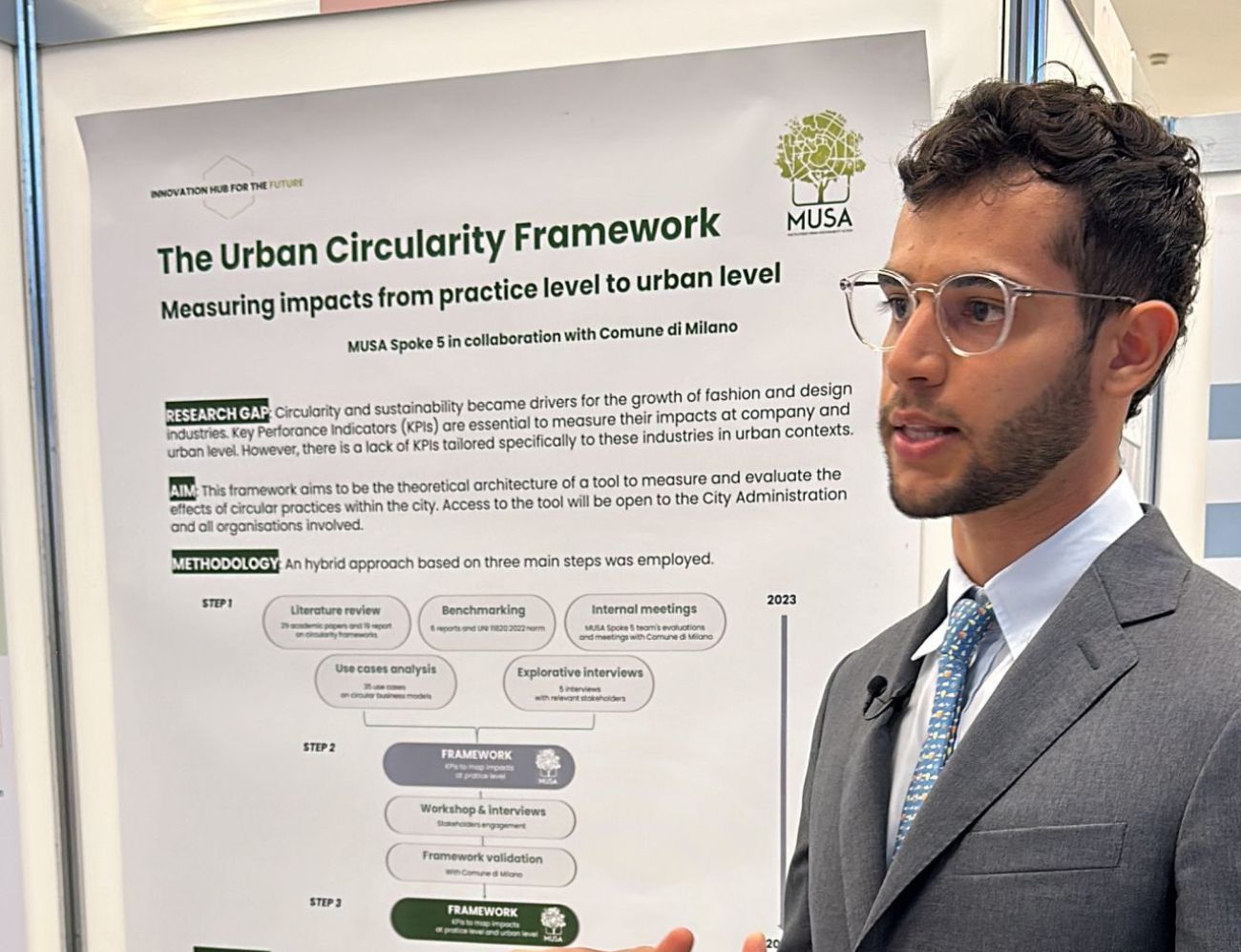Presented during the Third General Meeting of MUSA, the project aims to provide measurement tools to assess circularity at the organisational and urban level.
During the Third General Meeting of MUSA, an innovative project entitled The Urban Circularity Framework – Measuring Impacts from Practice Level to Urban Level was presented. This ambitious project aims to measure the impacts of organisations’ circular activities, both at individual practice level and on an urban scale. The main objective is to develop a tool that can be used by public administration to test the performance of urban circularity. At the same time, the framework will also be accessible to organisations, allowing them to assess their own impact on circularity.
Nicola Ruggiu, researcher at the Bocconi University of Milan, explained: ‘The project, entitled The Urban Circularity Framework, is a measurement framework, i.e. a dashboard of indicators – over a hundred – that serve to map both at the organisational level (practice level) and at the city level (urban level) the impacts and levels of circularity in the city. It provides organisations with a series of indicators that give an idea of their circularity performance, and also provides institutions and public administration, in this case the Municipality of Milan, with useful data for making crucial decisions on the territory.’
The project is of significant strategic importance. Ruggiu emphasised how the work has been developed from the beginning in collaboration with local authorities and managers of the Municipality of Milan, with the aim of ensuring replicability in other organisational and urban realities throughout Italy. ‘We aim to create high performance indicators, based on the the the the the the the the the commitment and potential of this project on the territory,’ Ruggiu added.
This project represents a the the the crucial step towards more sustainable and circular cities by providing concrete tools to measure and improve the impact of circular policies and practices.





